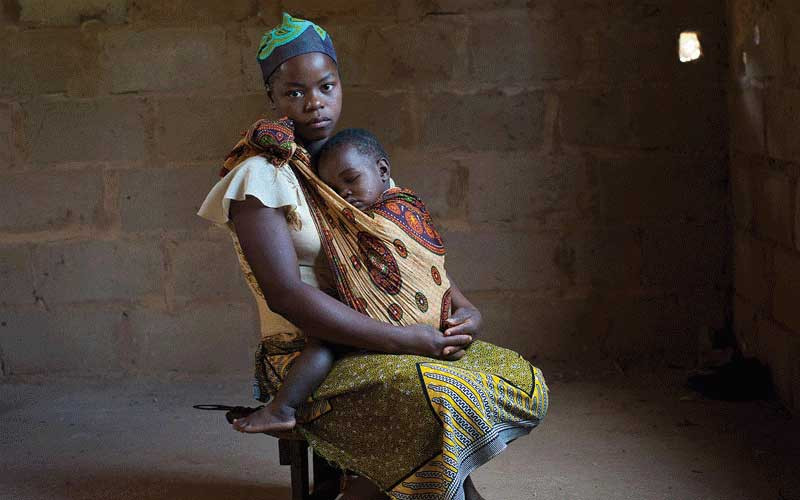
IN a groundbreaking move that marks a new era for child protection in Zimbabwe, President Emmerson Mnangagwa has put pen to paper, signing into law the Criminal Laws Amendment (Protection of Children and Young Persons) Act, 2024.
This pivotal piece of legislation, which criminalises sexual intercourse with individuals under the age of 18, represents a seismic shift in the country’s approach to safeguarding its youth.
The new law not only aligns Zimbabwe with international standards for child protection, but also sends a powerful message about the nation’s commitment to nurturing and protecting its most vulnerable citizens.
The journey to this momentous legal reform is testament to the power of individual advocacy and the resilience of civil society.
It all began with the courageous efforts of Diana Eunice Kawenda, a former child bride who refused to let her past define her future.
Instead, she channelled her experiences into a fierce determination to fight for the rights of young children across Zimbabwe.
As reported by Mike Murenzvi for newZWire, Kawenda’s tireless advocacy set in motion a process that ultimately culminated in a landmark Constitutional Court decision in May 2022.
This decision struck down unconstitutional sections of the Criminal Law Code, paving the way for the comprehensive protections enshrined in the new Act.
- Mr President, you missed the opportunity to be the veritable voice of conscience
- ED to commission new-look border post
- Zanu PF ready for congress
- EU slams Zim over delayed reforms
Keep Reading
The significance of this new law cannot be overstated, particularly when one considers the dangerous legal vacuum that preceded it.
Prior to its enactment, Zimbabwe faced a precarious situation where, as Murenzvi poignantly notes, “from May 24, 2023 to January 12, 2024, there were no protections from sexual exploitation available to children aged 13 to 18 years of age in cases where they 'consented' to sexual acts with an adult.”
This glaring gap in the legal framework left countless young Zimbabweans vulnerable to exploitation and abuse, a situation that was untenable in a nation committed to progress and the well-being of its citizens.
In setting the age of consent firmly at 18, Zimbabwe has taken a giant leap forward in aligning itself with a host of international conventions and standards on children's rights.
This includes the United Nations Convention on the Rights of the Child (UNCRC), a global treaty that sets out the civil, political, economic, social, health and cultural rights of children.
It also brings the country into harmony with the African Charter on the Rights and Welfare of the Child (ACRWC), a continental instrument that addresses the unique challenges faced by African children.
Furthermore, the new law resonates with the principles outlined in the Southern African Development Community (Sadc) Model Law on Child Marriage, demonstrating Zimbabwe's commitment to regional co-operation in protecting minors.
Essentially, the law provides a robust legal framework for prosecuting those who engage in sexual activities with minors, irrespective of any claims of consent.
This clear legal stance serves as a powerful deterrent against the sexual exploitation and abuse of children, sending an unequivocal message that such behaviour will not be tolerated in Zimbabwean society.
Beyond its legal ramifications, the Act has the potential to catalyse a profound cultural shift, challenging long-held attitudes towards child marriage and sexual relationships with minors that have persisted in some communities.
The health implications of the new law are equally significant. As highlighted by Ndavaningi Mangwana, permanent secretary in the Information, Publicity and Broadcasting Services ministry, “It is a serious offence to infect a child with an STI [sexually transmitted infection].”
This provision not only offers additional protection to minors, but may also contribute to reducing the spread of STIs among young people, a critical public health concern.
Moreover, by discouraging early sexual relationships and marriages, the law may indirectly support educational continuity for young people, particularly girls who have historically been disproportionately affected by child marriage practices.
However, while the enactment of this law represents a significant stride forward, it is crucial to acknowledge that several challenges remain in effectively protecting children from sexual exploitation in Zimbabwe.
The effectiveness of the law will hinge heavily on its implementation and enforcement, which may prove challenging in rural or traditional communities where cultural practices and limited resources can impede the reach of formal legal structures.
There is an urgent need for widespread public education about the new law and its implications, particularly in areas where child marriages have long been culturally acceptable or even encouraged.
The country must also grapple with bolstering its support services for victims of child sexual abuse and exploitation.
This includes not only immediate interventions such as counselling and legal aid, but also long-term rehabilitation programmes that can help survivors to rebuild their lives and reintegrate into society.
Furthermore, it is essential to address the underlying economic factors that often drive child marriages and sexual exploitation.
Poverty remains a significant challenge in many parts of Zimbabwe and without addressing these root causes, the cycle of exploitation may prove difficult to break.
To effectively tackle these complex issues and ensure the new law achieves its intended impact, a comprehensive, multi-stakeholder approach is imperative.
Government agencies across various sectors, including justice, education, and social welfare, must work in concert to develop and implement comprehensive strategies.
Law enforcement officials and judicial officers will require specialised training not only on the details of the new law but also on sensitive and appropriate handling of cases involving minors.
Civil society organisations have a crucial role to play in this process.
Non-governmental organisations (NGOs) and community-based organisations can leverage on their grassroots connections to raise awareness, provide support to victims and monitor the law's implementation on the ground.
Engaging traditional leaders, including chiefs and community elders, will be vital for changing attitudes in rural areas where traditional practices may conflict with the new legal framework.
Educational institutions, from primary school to university, must incorporate comprehensive sexuality education that includes information about the legal age of consent and the consequences of violating the law.
The media, both traditional outlets and emerging social platforms, can serve as powerful allies in disseminating information about the new law and promoting child protection messages.
Collaboration with international partners, including UN agencies and international NGOs, can provide essential resources and expertise in child protection strategies.
Even the private sector has a role to play, with businesses potentially contributing through corporate social responsibility initiatives focused on child protection and education.
As Mangwana aptly stated, “Now the nation can breathe a sigh of relief as our children now have safety and recourse within the law.”
Yet, this sigh of relief must be tempered with the recognition that the real work begins now.
The enactment of the Criminal Laws Amendment (Protection of Children and Young Persons) Act, 2024, represents not an end point, but rather the beginning of a new chapter in Zimbabwe’s ongoing efforts to protect its youth.
The challenge now lies in translating this legal protection into tangible safety and well-being for all of Zimbabwe’s children, ensuring that the promise of this landmark legislation is fully realised in the lives of those it aims to protect.
As Zimbabwe steps into this new era of child protection, it does so with renewed hope and a collective commitment to nurturing a generation that can grow, learn and thrive free from the spectre of exploitation and abuse.










